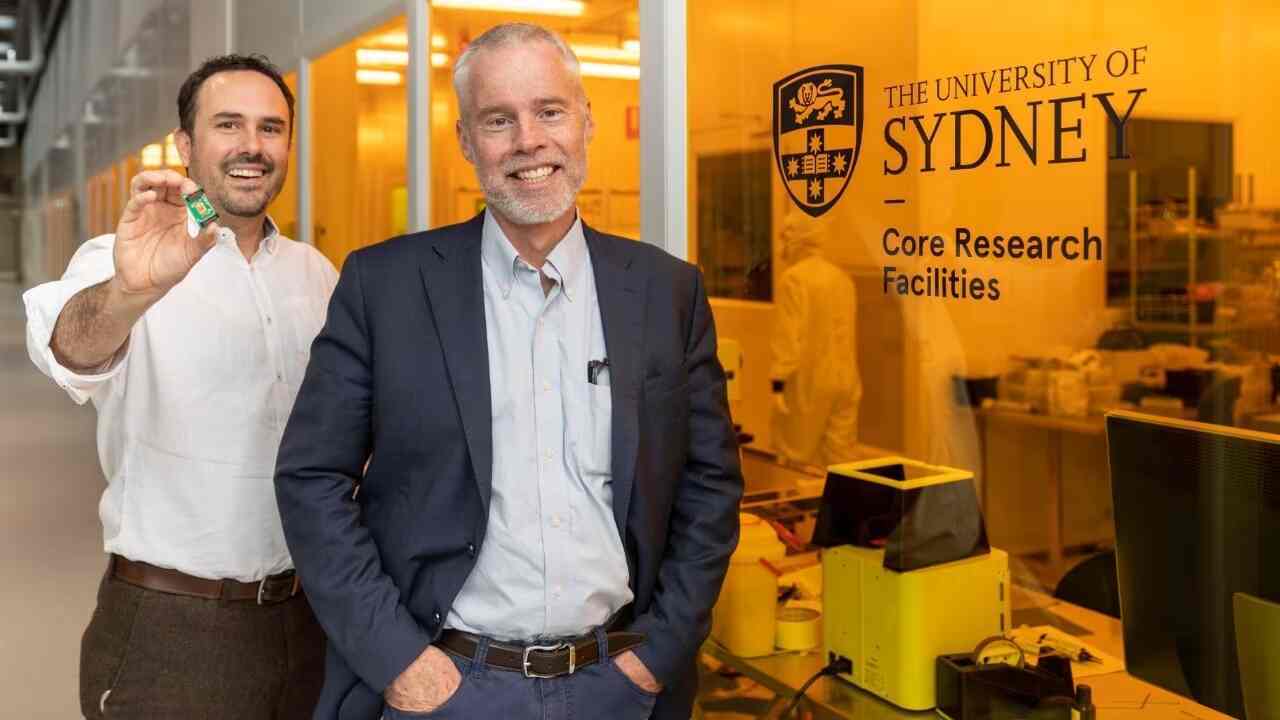Australia's breakthrough in enhanced communications: The future of semiconductor innovation

Revolutionizing RF Bandwidth and Controlling Information Flow
Australia is on the verge of a breakthrough in the field of enhanced communications. The University of Sydney Nano Institute's researchers have developed a compact silicon semiconductor chip that combines electronics with photonic components, expanding radio-frequency (RF) bandwidth, and revolutionizing the control of information flow. This groundbreaking technology can reshape the global semiconductor landscape and pave the way for advanced radar systems, satellite networks, wireless communication, and the upcoming rollout of 6G and 7G telecommunications.
The Birth of a Versatile Semiconductor Device:
The newly invented chip combines the power of photonics with silicon-based electronics, unlocking a world of possibilities in advanced filter controls and information processing. The integration of diverse systems on a semiconductor chip, less than 5 millimeters wide, is made possible through the emerging technology of silicon photonics. Professor Ben Eggleton, Pro-Vice-Chancellor (Research) and the guiding force behind the research team compares this integration process to building with Lego blocks, where new materials are seamlessly integrated through advanced packaging of components, using electronic 'chipsets.'
Australia's Path to Sovereign Chip Manufacturing:
This new chip technology empowers Australia to develop its sovereign chip manufacturing capabilities, reducing reliance on international foundries for value-added processes. This is particularly significant as most critical technologies, as outlined by the Federal Government, depend heavily on semiconductors. With this breakthrough, Australia's semiconductor ecosystem gains momentum, aligning with initiatives like the Semiconductor Sector Service Bureau (S3B), sponsored by the NSW Government, which aims to drive advancements in semiconductor technology and foster local research and design. Dr. Nadia Court, Director of S3B, expresses her enthusiasm for this work, stating that it reinforces Australia's strength in research and design and holds great promise for the future of semiconductor innovation in the country. This achievement comes at a pivotal time when global focus and investment in the semiconductor sector are at an all-time high.
Collaboration and Advanced Manufacturing Facilities
The development of the integrated circuit was a result of collaboration between scientists at the University of Sydney Nano Institute and the Australian National University. The chip was built at the state-of-the-art Core Research Facility cleanroom located in the University of Sydney Nanoscience Hub, which is equipped with advanced lithography and deposition capabilities. This purpose-built facility, which had an investment of $150 million, provides researchers with the necessary tools and infrastructure to bring their innovative ideas to life.
Unleashing the Power of the Photonic Circuit
The photonic circuit at the heart of this remarkable chip enables a device with an extraordinary 15 gigahertz bandwidth of tunable frequencies. With a spectral resolution of only 37 megahertz, which is less than a quarter of one percent of the total bandwidth, this chip offers unparalleled precision in filtering different frequencies, reducing electromagnetic interference, and improving signal quality.
Professor Eggleton emphasizes the significance of this invention in the field of microwave and integrated photonics research. Led by Ph.D. student Matthew Garrett, this breakthrough opens the door to a new generation of compact, high-resolution RF photonic filters with wideband frequency tunability. These filters find valuable applications in air and spaceborne RF communication payloads, promising enhanced communications and sensing capabilities.
The Future of Enhanced Communications and Semiconductor Innovation
The development of this compact silicon semiconductor chip marks a turning point in the world of enhanced communications. By integrating photonic components with electronics, Australia has unlocked the potential for advanced radar systems, satellite networks, wireless communication, and future telecommunications standards like 6G and 7G.
This breakthrough not only expands RF bandwidth but also provides precise control over information flow, setting the stage for a new era of semiconductor innovation. With the ability to manufacture these chips locally, Australia can establish itself as a leader in semiconductor technology, reducing dependence on international foundries and fostering the growth of a thriving local semiconductor ecosystem.
At a time when the world is increasingly dependent on semiconductors, Australia's innovative work in enhanced communications is of great significance. Utilizing the power of photonics and silicon photonics, this technology has the potential to revolutionize various industries and transform our communication methods. The University of Sydney Nano Institute's researchers' groundbreaking work has brought us closer to realizing the future of advanced radar, satellite systems, wireless networks, and telecommunications.

 How to resolve AdBlock issue?
How to resolve AdBlock issue?